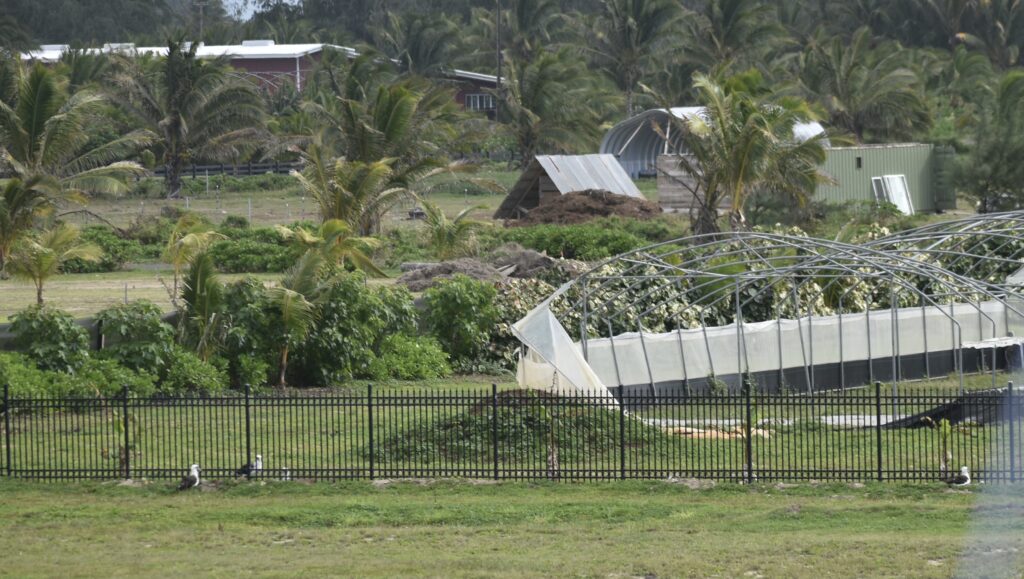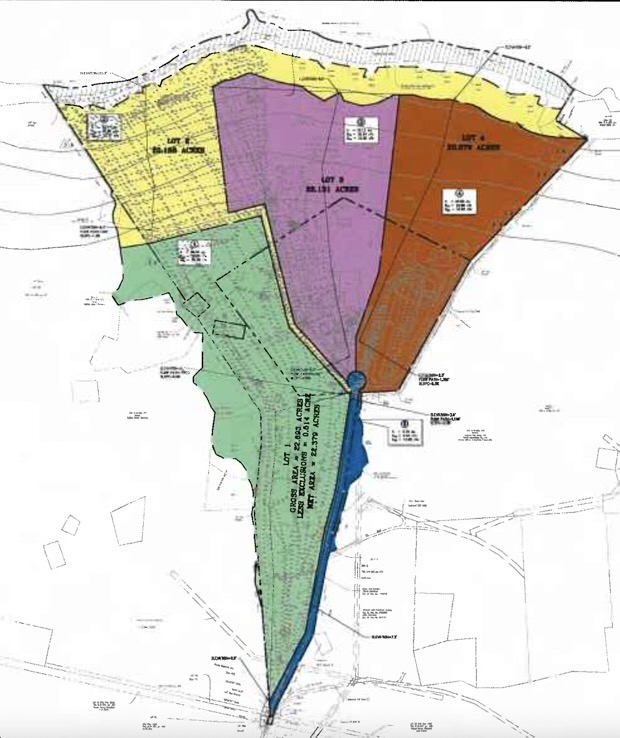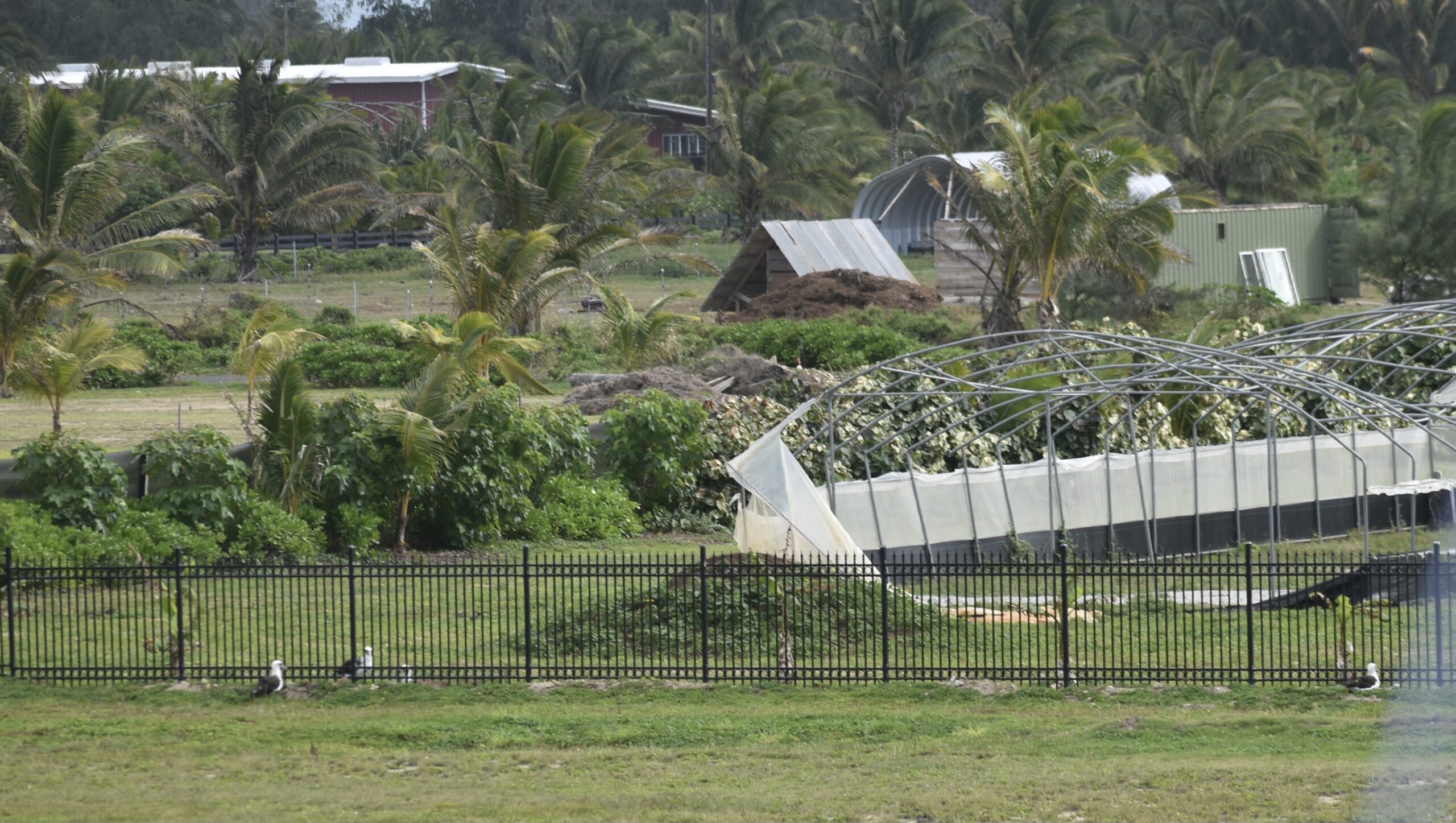
A federal lawsuit over whether development planned for a condominium property regime at Marconi Point requires a Special Management Area permit is still alive, but much narrower in scope.
On December 20, U.S. District Judge Jill A. Otake granted in part and denied in part the City & County of Honolulu’s motion to dismiss a complaint filed last May by companies owned by developer Jeremiah Henderson III. The companies hold title to several units within the Marconi Point Condominiums on Oʻahu’s North Shore.
Henderson — through his companies Makai Ranch, LLC; Marconi Farms, LLC; MP Unit 21, LLC; and RCA Trade Center, Inc. — argues that they are entitled to declarations that the Honolulu Department of Planning and Permitting cannot withhold approvals for roadways, an agricultural subdivision, and buildings since the agency had assured Henderson years ago that no Special Management Area permit would be needed for development within the condominium property regime.
Henderson also claims the companies are entitled to declarations that the DPP had taken the companies’ real property rights, deprived them of their due process rights, and violated their equal protection and civil rights.
In addition to the declarations, Henderson is asking for an order forcing the DPP to approve the subdivision applications and building permits.
He wants compensation for the real property taking and damages.
His complaint also accuses the DPP of illegally withholding public documents regarding investigations into corruption within the department. And he alleges that the city’s Real Property Assessment Division has been improperly taxing the Marconi Point Condominiums property.
“Defendants have violated Plaintiffs’ constitutional rights by on one hand preventing Plaintiffs from using their property for lawful agricultural purposes, while on the other hand simultaneously taking the position that the City is entitled to greater real property tax revenue because Plaintiffs’ properties are not in active agricultural use,” his complaint states.
With regard to the DPP-related counts, Otake denied the city’s motion to dismiss the ones seeking declarations and an order regarding Makai Ranch’s application for an agricultural subdivision. She did dismiss those same counts as they applied to the roadway subdivision application and buildings permits. Even so, she gave the companies until January 31 to amend their complaint to address deficiencies regarding those counts.
Some Background
More than a decade ago, Henderson established the agricultural CPR on property that includes the old Marconi Wireless Telegraph Station and sits between two conservation areas: the ecological restoration project makai of the Turtle Bay golf course to the north and the Campbell National Wildlife Refuge to the south.
According to court documents, Henderson had planned early on to mine the property of as much as 78,000 cubic yards of sand (estimated by him to be worth $11,700,000) and use profits to establish a casualty insurance company that he would run with his uncle, Tim Reynolds.
While Henderson did manage to sell some sand mined on the property about a decade ago, that venture fizzled out and failed to generate anywhere near the hoped-for revenue.
Henderson planned to build a solar photovoltaic project, get entitlements to build several farm dwellings, and get the telegraph station’s dilapidated buildings listed on national and state historic registers so a hotel could be redeveloped within the agricultural zone. While the historic buildings are listed, Henderson’s efforts to further develop the CPR — and ultimately sell it — have not gone as planned.
In a March 3, 2014, email to his uncle, Henderson wrote, “Here’s the trouble we’re having re real estate sales after going to market:
“Wholesale Market (Developer Buyers):
“They won’t put a value on Future Building Sites until Tentative Subdivision Approval. … They don’t see value in non-buildable vacant farm sites. … We don’t have enough buildable CPR Units to attract a developer right now … The infrastructure costs are difficult to determine …
“In sum, the market has changed and those who survived the down market want properties with entitlements in-place. They are not willing to take risks on entitlements dependent.
“Retail Market (End User Buyers):
“1. They want to see paved streets, utilities installed, green grass, and palm trees in the ground.
“2. They want to see final documents v. drafts. This should be resolved when public report review is over.
“3. Some have been concerned about safety and the ability to enjoy the ocean.”
By establishing the CPR that included a handful of allowable farm dwellings, Henderson was able to begin selling units in late 2014. To date, more than two dozen units have sold for a total of more than $22 million. But efforts by unit owners to obtain building permits have been stalled, with the DPP’s insistence on the submission of agricultural development plans.
And when Makai Ranch submitted an application for a roadway subdivision in 2017, and an agricultural subdivision in 2020, the DPP informed the company that given all the planned development in the area, it had determined that a Special Management Area permit needed to be applied for before any more development could proceed.
When Henderson’s companies sued the city last May, they pointed to DPP documents that they claimed assured them that no SMA permit was needed for the planned farm dwellings within the CPR. They included a 21014 letter from former DPP director George Atta, internal department checklists, and a 2010 internal memorandum that indicated that the construction of up to two farm dwellings per tax map key lot was not considered development subject to SMA rules.
In the city’s motion to dismiss the complaint, it argued that despite the documents Henderson cited, the DPP always retained the discretion to determine that an otherwise exempt activity requires a SMA permit because it may have a significant environmental or ecological impact on the area.
The city also pointed out that Henderson’s companies failed to exhaust their administrative remedies before heading to federal court.
Otake Order
For the most part, judge Otake agreed with the city.
“Plaintiffs creatively plead that ‘DPP’s decision to renege on its past official assurances’ that Plaintiffs did not need an SMA permit constitutes the final decision ripe for review. … [P]laintiffs’ assertion merely amounts to frustration that DPP has decided to exercise its statutory discretion to require Plaintiffs to seek an SMA permit. And that decision cannot constitute a final regulatory action that effects a potential taking. … If Plaintiffs’ position were law, every time a person or business sought state approval for a project and was told to comply with a legitimate, discretionary regulation, they could bring a federal takings case,” she wrote.
What’s more, she found that the companies’ complaint about being “placed in the procedural doldrums of the City’s permitting scheme” is also not an appealable decision by the DPP. “Plaintiffs are the cause of their own procedural doldrums—they refuse to apply for an SMA permit because they claim that they ‘maintain their vested rights to develop the property without an SMA permit,’” she wrote.
With regard to the DPP documents that Henderson’s companies say were official assurances, Otake pointed out that the 2014 letter from Atta “was in response to a specific question: whether the status of the existing historical structures would impact plaintiffs’ ability to construct a farm dwelling on the property. Plaintiffs did not ask whether DPP would consider the entirety of the project as exempt from SMA permit requirements, and it is undisputed that the letter does not address the agricultural and roadway subdivision applications.”
She continued that while the internal checklists and an advisory entry were “probative of DPP’s approach to the discrete building permits, they similarly do not address the subdivision applications, nor do they amount to the kinds of official assurances ‘that necessary approvals will be forthcoming in due course’ as to the entirety of the project. Moreover, the advisory entry was within DPP’s own permitting system. At the time they expended effort and money, plaintiffs could not have relied upon an internal advisory notice. Finally, the 2010 DPP memorandum is a statement of DPP’s interpretation of ‘existing zoning law’— exactly what the Hawai‘i Supreme Court has said is legally insufficient to induce reliance that would estop the City from requiring an SMA permit.”
She concluded that the companies have no vested rights to building permits or a roadway subdivision without obtaining an SMA permit and, therefore, they “did not suffer an injury to a legal cognizable right.”
While Otake dismissed all of the counts regarding building permits and the roadway subdivision, it was with leave to amend to include any further official assurances that would “give rise to vested or estopped rights to proceed without an SMA permit.”
“[A]ny amendment must show that plaintiffs have obtained a final, discretionary decision from DPP Defendants regarding their ability to obtain an SMA permit. Alternatively, plaintiffs could cure the jurisdictional problems in Counts I and II by providing sufficient official assurances from DPP Defendants that no SMA Permit was required for the building permits to issue and the subdivision plans to be approved. … Curing the jurisdictional problems in Counts I and II by demonstrating a legal entitlement to proceeding without an SMA Permit would also likely cure the jurisdictional problems in Counts III (inverse condemnation), IV (due process violation), and XI (civil rights violations),” she wrote.
‘A Wrinkle’
When it came to Makai Ranch’s application for an agricultural subdivision, the city’s delayed response may have constituted a final, appealable action, Otake found.
“DPP Defendants have not reached a final decision that would make Plaintiffs’ claims against them in Counts I and II ripe, at least as to the building permits and the roadway subdivision application. But the agricultural subdivision application (Counts I-C and II-C) has a wrinkle,” Otake wrote.
Under Hawaiʻi Revised Statutes Chapter 91-13.5(c), agencies “shall take action to grant or deny any application for a business or development-related permit, license, or approval within the established maximum period of time, or the application shall be deemed approved.”
And the City & County of Honolulu’s rule 2-202(b) establishes a 30-day window for the DPP director to act on a preliminary subdivision map.
On February 14, 2020, Makai Ranch submitted its subdivision application to subdivide the Marconi Point CPR into four agricultural lots, ranging in size from around 20 to 23 acres, plus a fifth lot for a roadway. The new configuration would allow more farm dwellings to be built much closer to the shoreline.

The DPP did not respond with its deferral letter until April 24, more than two months after the application had been submitted.
Part of the reason for the delayed response may have been that the DPP had been waiting on comments from other agencies. The DPP had asked the state Historic Preservation Division on March 3 to comment on the application. SHPD eventually replied, asking that the DPP postpone Makai Ranch’s subdivision request until after a “Memorandum of Agreement to address adverse effects to historic properties has been completed and executed.” That response did not come until April 20.
Even though the DPP director at the time, Dean Uchida, did not act on the preliminary subdivision map within 30 days of the application’s filing, Makai Ranch still tried to meet the 14 conditions the DPP said needed to be met before it would act on the application.
When the DPP did not respond for months to Makai Ranch’s revised preliminary maps and other documents meant to satisfy the DPP’s conditions, the company’s attorney, Greg Kugle, wrote to Uchida in January 2021, arguing that the preliminary maps should have been automatically approved.
In his reply, which came six months later, Uchida argued that the automatic approval provisions for subdivision applications don’t apply to those that have not progressed beyond tentative approval.
In her order, Otake found that the Henderson companies plausibly alleged that the DPP was required to act on Makai Ranch’s agricultural subdivision application within a set time and had not done so “which should result in automatic final approval.”
“DPP Defendants do not appear to respond to this contention,” she continued. “Assuming the truth of the allegations in the complaint, automatic approval would constitute a final decision that DPP Defendants are unlawfully withholding from Plaintiffs. …
“Plaintiffs have plausibly alleged that they have a vested right to approval of the agricultural subdivisions under Hawai‘i law because they were entitled to automatic approval of those plans. … The court concludes that plaintiffs have alleged sufficient facts as to Counts I-C and II-C to survive a motion to dismiss,” she wrote.
Other Claims
In their complaint, Henderson’s companies alleged that the main reason why the DPP halted development at Marconi Point was because of the influence of a corrupt consultant.
Architect William Wong, who has been convicted of federal bribery charges, was hired by Makai Ranch to help advance a stalled farm dwelling building permit. Henderson’s complaint alleges that because Makai Ranch chose not to pay Wong for a new archaeological survey, Wong had the DPP kill some building permit applications.
Even assuming that the Wong allegations were true, Otake did not find they amount to a constitutional violation or displace “the uncontroverted, discretionary authority DPP always maintained to require an SMA permit based on the cumulative impact of the project.”
The companies also alleged that the DPP treated the development of Marconi Point differently from other CPR development projects on agricultural lands, and that this amounted to an equal protection violation under the Fourteenth Amendment of the U.S. Constitution.
Otake wrote, “Plaintiffs elaborate only that ‘[o]ne such example is the Waialee condominium project located near Kawela Bay, which like the property, is located within the SMA and contains several zoning lots and multiple condominium units, with five farm dwellings.’ The court agrees with Defendants that ‘[t]his single vague assertion, which does not even give the Waialee project’s precise location, zoning, or the date of development, is not enough to sufficiently plead a claim” that plaintiffs have been arbitrarily treated differently than similarly situated developers and development projects.’”
She, therefore, dismissed the companies’ equal protection claims with leave to amend.
In its motion to dismiss, the city tried to bolster its case by pointing out that Act 16 of the 2020 legislative session amended the state’s Coastal Zone Management law to require an SMA permit for any farm dwellings proposed to be built on a zoning lot, not just when three or more are proposed.
To this, Otake stated that she agreed with Henderson’s companies that the DPP cannot rely on Act 16 to defend its actions because it “specifically provides that it ‘does not affect rights and duties that matured, penalties that were incurred, and proceedings that were begun before its effective date’ of September 15, 2020. Here, the building permits and subdivision applications were sought well before the effective date of Act 16. However, the discretionary exception to SMA permit-exempt development still applied at the time plaintiffs sought their permits and subdivisions, so the court is not persuaded that Defendants’ purported reliance on this argument substantially affects this case.”
— Teresa Dawson
For Further Reading
For more background, see the following on our website, www.environment-hawaii.org:
- “Condominium Regime at Marconi Point Complicates Construction, Enforcement,” November 2022;
- “Developer Sues City for Holding Up Permits, Subdivision at Marconi Point,” July 2023;
- “Claim that Marconi Point Developer Is Exempt From SMA Permit Need Is Disputed by City,” October 2023;
- “New Owner at Marconi Point Decimates Coastal Habitat for Native Bees, Birds,” November 2023;
- “City Planning Department Considers Potential Violations at Marconi Point,” December 2023


Leave a Reply